Intercom


SISTERS OF CHARITY OF CINCINNATI





A Leap of Faith 6-8

Charism alive at Federation House of Charity.

Healing Our Global Home 10-12 SCs leading ecological movements to promote a healthy Earth.



Care for All Creation ...........................13
Q&A with Associate Sue DiTullio.
Called to Protect Our Earth 14-15
Community gifts land to Western Wildlife Corridor.






Caring for Earth, Caring for You 17
S. Joyce Richter’s commitment to Earth.

Revolutionizing How People Think 18
EAS Award recipient Colleen McSwiggin’s passion for the care of creation.
Abundant Blessings ....................... 20-21
S. Grace Ann Gratsch reflects on 75 years of ministry.
St. Joseph Home 22-23
The early beginnings of St. Joseph Maternity Hospital and Infant Asylum.
Coming Home 24-25
A 1644 chalice finds its way home to Ireland.
Heritage, Legacy and Evolution 26-27
Second floor renovations to the MSJ Motherhouse.


On the Cover: Sisters Caroljean Willie, Winnie Brubach and Associate Sue DiTullio are engaging youth to adults with programming and initiatives at EarthConnection.
Disclaimer: The information contained in Intercom is intended for general information and educational purposes only. Opinions expressed herein are the views of individual authors and do not necessarily reflect the opinions or policies of the Sisters of Charity of Cincinnati.
Dear Sisters, Associates and Friends,
Every so many years Catholic Sisters gather to reflect on our lives in light of the signs of the times and to choose leaders for the next four years. This gathering is called “Chapter.”
Leading up to the gathering of delegates and collaborators, there is a lengthy period of preparation during which the Community considers where the Spirit has been leading the Community during the previous years. Matters of mission, Community life, and ministry are pondered and lead to questions about how we might move forward into our shared future. It’s a sacred time. It’s a serious time of exploring together the core values and expectations that hold us in communion.
Chapter signifies the continuity between our past fidelity to our call as women religious and our emerging future. Who we have been and who we are becoming is continuously nurtured by our relationships with those we serve and God’s abiding generosity. Preparation for Chapter calls us to reflect on the opportunities that lie ahead. Chapter almost always initiates change, transition, renewal, and visioning.
Religious life is undergoing extraordinary transformation, opening pathways for new generations of vowed members. It is an awesome grace that has led us to this moment—and it is an awesome grace that will sustain the witness of women religious so much needed in our groaning world. As our April Chapter draws near, God’s whispering mantra of grace continuously invites us to collectively and gently move to new horizons.
With the momentum of this past year’s planning at our back, we find ourselves grounded by our sacred roots and firmly planted in the soil of possibility. We are growing toward new horizons, leaning into God’s love and fidelity.
Grateful for your companionship on this journey, we ask you to join us in prayer as we stand in the place of unfolding receptivity to the new …
For hearts and minds to envision ways of living our mission to its fullest. For spirits that illuminate the joy of God in our interactions and deliberations. For hearts to hold the vulnerabilities of our humanity with tenderness and compassion.
For our new leaders, as these courageous women take up the map of our life, seeking out new horizons with confidence and wisdom.
We walk by faith … and are certainly grateful that you, our friends and family, walk with us.
Blessings,
IN MEMORIAM
Please visit “In Memoriam” at www.srcharitycinti.org for biographical information and reflections on the Sisters of Charity and Associates who have died.


May our Sisters and Associates enjoy the fruits of their labor as well as peace with God.
Associate Eileen Casey

February 19, 2023
Associate Ruth Meyer
January 25, 2023
S. Ann David Wojtylka
December 25, 2022
S. Emily Anne Phelan
December 16, 2022

S. Florence Sliva
November 29, 2022
The buildings at Mount St. Joseph radiate a sense of solidity and immutability that belies the myriad of changes the Sisters of Charity of Cincinnati and the campus have undergone since the property was purchased in 1869. The current campus evolved over many decades and has undergone repeated retooling and renovation as the congregation grew and needs changed.
A major addition to the Mount came in 1947 when the Sisters of Charity broke ground for a sevenstory skilled nursing care facility. The congregation had grown to more than 1,300 members and the Leadership Council desired to provide a facility to meet the needs of an increasing number of senior Sisters. At the time of its dedication in 1949, Mother Margaret Hall included 140 private rooms, a chapel, library, pharmacy, and community room.
MMH has continued to serve Sisters needing skilled nursing including memory care and Assisted Living as well as respite care for Sisters recovering from short-term illnesses and surgeries for more than 70 years. Today, the Sisters of Charity number 201 Sisters with approximately 65 Sisters calling MMH home in nursing care and Assisted Living.
MMH has been updated along the way to maintain the best services for Sister-residents. The most recent in 2003 was an extensive renovation of the skilled nursing and memory care areas. The facility was redesigned to meet Medicaid standards, in the event the congregation should decide to seek certification in the future. Hallways were widened, rooms were enlarged, private ADA-compliant bathrooms added to each room and new plumbing, electrical and HVAC infrastructure throughout.
The Assisted Living areas in the west wing of the building were renovated in 1991 to provide small two-room suites with private baths. The COVID-19 pandemic brought to the fore a number of shortcomings with the Assisted Living areas. Following listening sessions with the Sisters living in AL, the Leadership Council and MMH administration team recognized the need for professional expertise to provide a holistic, comprehensive and inclusive planning and design process to enhance the Assisted Living experience.

Hoffman Planning, Design and Construction Group has been engaged to assist the congregation with the process.

Hoffman Group, located in Appleton, Wisconsin, works with religious congregations to help them assess their facilities needs and plan for the future. This conceptual phase of the process will assess our facility and lifestyle needs and identify opportunities for creating a more inviting and comfortable AL space for us now as well as other uses in the future. This phase will be completed in May 2023.
The Hoffman Group team will be working closely with two groups throughout the process, the MMH Assisted Living Planning Group and the MMH Assisted Living Planning Resident Subcommittee (RSC). The RSC will provide input from the Sisters’ perspective to review as well as input on potential conceptual designs to Hoffman and the Leadership Council. The MMH-AL Planning Group will determine the direction of the concepts developed based on insights from the RSC and make recommendations to the Leadership Council.
Religious life is evolving and recreating itself in ways that move away from big structures and institutions. Like most religious congregations today, we Sisters of Charity find ourselves with more “house” than we need to meet our shortand long-term future needs. This AL planning process, which seeks to align with our current and near future congregational realities, is just one aspect of a more comprehensive and ongoing conversation about the future of the Motherhouse campus.
In June 2014 the Sisters of Charity of Cincinnati announced the approval of cause for canonization for S. Blandina Segale. In the nine years since, S. Blandina’s cause for sainthood has continued to move forward, earning her the title ‘Servant of God’ and awaiting confirmation of miracles attributed to her intercession. Her story and legacy continues to gain strength and interest. Most recently Cincinnati Local 12 aired the documentary “Sister Blandina Segale: A Cincinnati Saint,” debuting Dec. 9, 2022 in Cincinnati. In its teaser, the station advertised: “Known for confronting outlaws and injustice, educating children and caring for the sick, S. Blandina served as a missionary, building schools and hospitals in the Wild West. In Cincinnati she helped immigrants adjust to American life.”


The documentary was the brainchild of producer Patti McGeever, a friend of the Sisters of Charity Community, who began thinking about making a half-hour special about S. Blandina while working from home during the COVID-19 pandemic. “There is so much to S. Blandina’s story and I didn’t think people here knew enough about her – or knew about her at all,” McGeever explains. “It’s hard not to want to know more about a nun who stands up to the notorious Billy the Kid! Add to that, that the social institution she and her sister founded in Cincinnati (Santa Maria Community Services) is still going strong 125 years later – and the parish (San Antonio) she helped found 100 years later. So I pitched a 30-minute special on her because if she’s canonized, she will be a Cincinnati Saint, despite the Diocese of Santa Fe opening the cause. Instead, our general manager, Jon Lawhead, asked that we make it a one-hour special. I would have kicked myself from here to eternity had I not pitched it and it ended up on someone else’s air. Or not done at all.”
She enlisted Good Morning Cincinnati anchor Bob Herzog to host, and their one caveat: to make the show appealing to those who aren’t Catholic. The story took them not only to the Cincinnati community, but also to New Mexico and Colorado. “I filled the hour with tales from the Wild West, her local accomplishments and a miracle that was investigated by the Vatican,” she explained. The team from Local 12 researched her life by tracking her journey from Cincinnati to the Santa
Fe Trail and back to Cincinnati. They interviewed numerous individuals out West and in Cincinnati to show viewers how S. Blandina’s actions impacted the lives of so many others. Included amongst them were popular restaurant chain owner Buddy LaRosa, who knew Sister personally; Allen Sanchez, petitioner of Sister’s cause for sainthood; and Peso Chavez, the private investigator who researched the stories she told in her journal and letters. In addition, Pam Ehrman Kent, a woman from Delhi, Ohio who, after being given a bleak sentence from doctors, now credits her continued good health to S. Blandina.
This amazing story immediately captured the hearts and intrigue of all who watched. The Motherhouse has received a multitude of requests from interested individuals for more information on S. Blandina, particularly as it relates to her novena. McGeever says her team also received an overwhelmingly positive response, adding, “I feel like we introduced S. Blandina to a whole new audience. I think the miracle segment gives people hope, showcases the power of prayer and shows gratitude for an answered prayer.”


In August 2022 filming wrapped on the set of At the End of the Santa Fe Trail, a movie based on the life of Servant of God, S. Blandina Segale. The film includes some footage from the 2017 television series pilot along with new scenes shot in Texas and New Mexico in 2022. The new footage mostly focuses on S. Blandina with actress Alma Sisneros returning to her role.
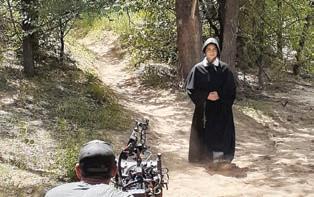


Directed by Tomas Sanchez, At the End of the Santa Fe Trail is based on S. Blandina’s journal entries and letters from her time spent in the West. The film debuted at the Santa Fe Film Festival in February and was summarized in the following manner: “[The film] portrays the life of Sister Blandina (Maria Rosa) Segale, SC, and her faithful service in
God’s name. The Sisters of Charity of Cincinnati missioned her out West at the age of 22 to serve communities and teach the faith. She encountered many obstacles, and stayed true to her beliefs, even challenging Billy the Kid to spare someone’s life!”
Sanchez was eager to share the film with the Sisters of Charity Community and those living in the Cincinnati area. On March 24, 2023, the congregation hosted a screening for Sisters and Associates at the Mount St. Joseph Motherhouse. That evening Mount St. Joseph University offered a special viewing to the public.

We welcome new Associate Lisa Lindeman to the Community. Lisa made her commitment as an Associate in Mission at the National Shrine of St. Therese in Juneau, Alaska, on Feb. 26, 2023. In her discernment statement, Lisa says, “I believe becoming an Associate of the Sisters of Charity of Cincinnati is another step in my spiritual journey in this life. I believe my gifts may contribute to the work of the Sisters in terms of service to children and persons experiencing homelessness.

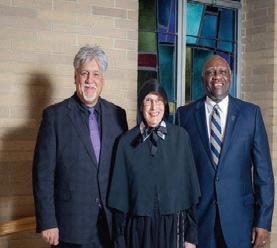
with Associate Destiny Sargeant, made her commitment as an Associate in Mission on Feb. 26, 2023.
Lisa Lindeman
… The volunteer work I do is needed in Juneau, and it helps children. What I’m looking for is something more. I am looking for more spiritual growth and development. The women Associates in Juneau are a wonderful group of women who are faith-filled and strong in love and spirit. I want to join the group of Associates in Juneau and the Sisters of Charity to continue my spiritual development and practical charity.”
“
(right), pictured

 By Erin Reder
By Erin Reder
Thirteen years ago, S. Monica Gundler began a new journey. She left Cincinnati, Ohio, and headed south to New Orleans, Louisiana, as one of the founding members of the House of Charity (HOC), a collaborative ministry of the Sisters of Charity Federation rooted in hospitality, prayer, and service. She never could have imagined in 2010 the impact this small, humble ministry would make on the hundreds of people who have visited and the many more in and around New Orleans who have benefitted from the Sisters’ presence.
What brought S. Monica to New Orleans more than a decade ago? “I felt like my heart was there before my body got there,” she recalls. “It was a very unique place, on the margins. There would always be work to do, and I wanted to be part of something that we initiated as a Federation. It was an opportunity to keep community alive, and I was passionate about it – even though it was a leap of faith.”
The collaboration of Federation Sisters has been key to the house’s success. Back in 2010 S. Monica was joined by Federation Sisters Renee Rose, DC, and Claire Regan, SCNY, and they began to determine how the HOC would operate and what they wanted to focus their energy and efforts on. While Sisters Claire, Renee and Monica didn’t know each other prior to moving in together, they worked hard to stay true to the mission: creating a place of renewal for Sisters in terms of mission; a place where young adults could come for an experience of community and to deepen their faith; and a place of service to the family of New Orleans.
In the years since its inception, the House of Charity has been a place for Federation Sisters to come and serve. “I think any Sister who has visited has found it an energizing place, a hopeful place and a prayerful place,” says S. Monica. Calling it a bonding experience for guests, S. Monica explains staying at the HOC has allowed Sisters opportunities to
connect in ways they couldn’t at a large gathering or conference. There’s time for conversations over breakfast or dinner, at a work site and through deep, powerful prayer experiences.

S. Theresa Kramer’s, SC Halifax, first visit to the House of Charity was in October 2011. S. Monica invited a group of Sisters of Charity of Halifax down for a weekend of prayer and clean-up. One month later S. Theresa returned for Nuns Build, an initiative started with the St. Bernard Project to help with the rebuilding efforts in the city.
“At that time, we had four different communities come together to clean up after Hurricane Katrina. Each morning, before setting out to work, we prayed together as one ‘Sister of Charity.’ I soon learned we are all about the same mission. We worked hard all day as one group and laughed most of the time doing work we had never done before. This sharing and laughter has turned into more than 11 years of close friendships with all who participated.”
S. Theresa continued, “In the evenings we came together to share our highs and lows of the day. Did we meet our goals? Did we give love or was more love given to us by the beautiful people of New Orleans? We went for an hour or so each night on these goals and soon knew we were all on the same page as Sisters of Charity. I loved praying and sharing with the Sisters of the other communities. I believe it was why I loved returning.” And it is why groups of Sisters continue to travel to New Orleans for Nuns Build each year.
Sister of Charity of Cincinnati Sally Duffy has participated in multiple Nuns Builds. She adds, “Nuns Build is a concrete example of the House of Charity living a ministry of service and hospitality to both the community of New Orleans and to Sisters and volunteers. Faith and prayer are always intentional, meaningful and essential components of the hospitality experienced at the House of Charity. Our day begins with morning prayer and reflection in the chapel. Prayers of thanksgiving are part of every meal at the volunteer sites. Sunday Mass at St. Jude’s near the French Quarter is truly a joyful celebration of keeping alive the memory of Jesus, and receiving Eucharist to share with others.”



Sisters living at the HOC are committed to providing a comprehensive experience to all guests who visit. Each Sister has her own role. S. Monica typically is the tour guide, showing visitors the city, organizing their days and work, and accompanying them to the work site. Everybody’s gifts are different, she says. Someone might excel at relating with the guests, helping them process their day or chatting about a particular subject or event that occurred. While others might enjoy cooking and caring for the guests inside the house.
They’ve mastered the art of welcome and hospitality, and have come to a familiar routine. Prayer is deeply embedded in the experience, with guests and Sisters gathering at various

times throughout the day. Evening prayer is led by a new person every night. S. Monica adds they are welcome to do so in their own native language or faith tradition. “That’s been a big part of our spiritual component,” she says. “We are Catholic Sisters and come from that tradition but also want to honor everyone’s faith traditions.”
S. Maryanne Ruzzo, SC Halifax, elaborates, “When we were dreaming about the House of Charity, I’m not sure I would have imagined that it would become what it is today. So many young people have journeyed through the house over these years and have left different persons. On the last evening, during faith sharing, often we would have them share how this experience has touched them. I found myself in tears listening to them. I will never forget one student who had participated in several service programs in other places said this was the first time that she was actually ‘allowed’ to talk about how God touched her through this experience. Young people of different religious traditions or ‘none’ were able to share where they saw the face of God or ‘love’ through the House of Charity. The hope was to share the charism of Charity through service, prayer, the community and one another. I would say that the Charity Charism is alive there and lives on in those who have journeyed there. They experienced that God is love and so did I.”
The community aspect and reflection are so important as the group has the opportunity to process together the day and what it means to their lives beyond that particular week. And it’s not just about the work; some nights the groups will play cards or games they brought with them, and usually one night during their stay, S. Monica takes them out on the town to visit City Park, taste a beignet, or immerse themselves in the culture and sounds of New Orleans.



Service is at the heart of the HOC mission. Thirteen years ago Federation Sisters saw the extreme need – education, health care, rebuilding efforts – and were called to serve the people of New Orleans. Whether it’s rebuilding homes, serving the elderly, or parish work, the experiences of service provide moments to talk with the people of New Orleans, hear their stories and gain an understanding and appreciation of their hardships and their immense gratitude and perseverance.
S. Monica never hesitates to introduce visitors to the many friends she has met over the years. People like Burnell Cotlon, who started a grocery store in the Lower Ninth Ward. “Burnell has always been inspiring and welcoming to all of our guests at the House of Charity,” she says. “His commitment to his community and desire to be of service are a great witness to all who have stayed with us and spent time with him.”
Those permanently living at the house have all become a presence in the community through accompaniment; whether it be outreach to mothers who lost their children to violence, participating in peace walks, assisting with a basketball league for at-risk children, or serving as an advocate on boards and committees. And new needs continue to emerge. S. Monica describes the importance of their presence in the community.
“We have always been their cheerleaders. We have been able to use our resources for the poor, whether it be physically, emotionally or financially. We’re not a force of nature, but we support in various capacities. We have tried to make a difference in the city.”
As the one HOC constant throughout the years, S. Monica has seen many arrivals and departures. She’s enjoyed friendships formed with all who have committed years of service to the house, including Sisters Renee and Claire, Mary Lex Smith, SCL, Vicki Lichtenauer, SCL, Peg Johnson, SCL, Kelly O’Mahoney, SCN, and current residents Patty Huffman, DC, and Bev Hoffman, SCL. Collaboration and companionship with women religious from other communities has brought a richness to the experience as well. “We were welcomed by other Sisters in New Orleans and have become a gathering spot for Sisters living and ministering in the area,” she said. “If we have a party, the Ursulines and Notre Dames and St. Joseph Sisters come and it’s an intersection for all of them. There are Daughters of Charity in the city and our card games and conversations are much fuller because we are from different places. I think there’s a lot about that connection with the broader sisterhood that’s really enriching.”
Being a continued, committed presence is key. As part of the greater faith community in the city, Sisters living at the HOC have helped to make a better quality of life for those living there.


Adds S. Theresa, “I am hoping and praying the House of Charity continues on for many more years. My days are over because of age. But I must say being at the house with the Sisters and people of New Orleans were my happiest moments in life. Now, my job is to pray and encourage other young people and Sisters to join in this beautiful and energizing mission.”
What would S. Monica say to a Sister considering this ministry? “Come and see. Come spend some time and learn what we do. Be open and ready for an adventure.”

 By S. Georgia Kitt
By S. Georgia Kitt
It’s not uncommon to hear heartfelt stories of Sisters of Charity in which a favorite teacher, an empathic caregiver, a trusted confidant or a ministry partner are recalled. Yet, these stories capture individual memories and snapshots in time. To really understand the breadth and impact of the Sisters of Charity, we must look at the mission and influence since the first four Sisters of Charity settled in Cincinnati, Ohio in 1829.
The Sisters of Charity have a rich history of carrying out the Gospel of Jesus Christ through service, advocacy and prayer. Known throughout Greater Cincinnati and beyond, our community of women religious embodies compassionate grace. Those who have encountered the congregation’s members can attest to our responsiveness and presence in the fulfillment of Christ’s work for nearly two centuries. The Charity of Christ continues to urge us to evolve, refocus and embrace new efforts that meet emerging needs.
In the undertaking of mission-driven calls, God’s work has moved us to respond with our minds, bodies and spirits. When the congregation numbered more than 1,000 women religious, the SC influence was evident in hospitals, schools, orphanages, social service organizations, senior living facilities and more. Having fewer Sisters on the “frontlines” doing God’s work is a reality. That reality, however, doesn’t dim the effects of our labors. It doesn’t diminish our passion to serve.
In September 2022, the congregation announced plans to transition sponsorship roles for our remaining sponsored ministries – Bayley, DePaul Cristo Rey High School, Mount St. Joseph University, Seton High School and St. Joseph Home. Reimagining SCs sponsorship role with a ministry isn’t unfamiliar territory; it’s a natural and normal progression.

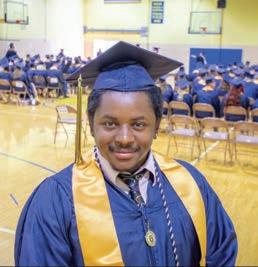
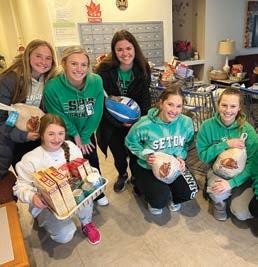

Today’s sponsored ministries – like those that embarked on sponsorship transitions before them – are thriving, independent organizations with proficient lay leadership at the helm. They are positioned for success, both financially and in the fulfillment of their missions. While Sisters will exit their board and governance roles over time, we will continue to champion and celebrate the Catholic heritage and values of these ministries as each continues to serve persons in need. We will watch our shared legacy grow and flourish, changing lives as Gospel values are made real.
We have a lot of which to be proud. While the congregation is smaller in number, our community presence and impact remains robust. Sponsorship evolution should not be mistaken as withdrawal or complacency; it signifies a new chapter and new opportunities to remain servants of action in supporting the basic needs of those pushed to the margins of society both locally and around the country.
History shows that faith-filled women of the Church are visionaries, innovators and risk-takers. The breadth and depth of SC service, whether in education, health care or social service capacities, can’t be learned by society’s traditional professional measurements alone. The barometer of success for mission-driven work is fulfilled in meeting community need and outreach to those on the margins.
No matter the decade, the ministry or the population being served, we believe the Sisters of Charity’s representation of Gospel values has resulted in much that is good. In this new time we go ahead, seeking ‘the next,’ to make room for the new, asking hard justice questions as they relate to climate change, racism, imbalance of power. We hear the call of the Earth to sustain our planet; the desire for truth; voices crying to be understood. As we continually seek to embrace the guidance of the Holy Spirit and the signs of these times, we anticipate ongoing engagement and collaboration with our lay collaborators, colleagues, partners and friends in the fulfillment of God’s will for God’s people. Many hands will make light work as all the faithful strive to achieve a shared vision.
Because we Sisters of Charity of Cincinnati dwell in this house of love and encounter God, we commit ourselves to choose to live simply in a complex world committed to the healing of our global home. (SC Vision Statement)
We hear the summons of Pope Francis in his encyclical Laudato Si’ “to profound interior conversion; a re-examining of our relationship with the Creator, with creation and with our brothers and sisters.” (LS 217)
These are stimulating and convincing words from the Sisters of Charity that compel them into action. Several Sisters are leading vital ecological movements to promote a healthy Earth beginning with the facilities, people and programs around Mount St. Joseph and expanding outward to many others. Through these efforts the Sisters and their collaborators exclaim their message and demonstrate actions for a sustainable and flourishing Earth.
In 2015 the SCs conducted an energy study of the Motherhouse to learn ways to lessen their carbon footprint. They partnered with Melink Corporation to determine ways to make the Motherhouse facilities more ecologically sustainable. A geothermal and solar system was installed for the houses on the property and the Motherhouse kitchen hood was replaced with one that controls the ventilation and conditions the air without constantly running. Also, LED light bulbs replaced the 10,500 incandescent bulbs throughout the Motherhouse saving 512 metric tons of carbon dioxide annually. LED bulbs are 90 percent more efficient.
Sisters Joyce Brehm and Jean Miller are recycling advocates around the MSJ Motherhouse and Mother Margaret Hall nursing facility. Their work is expanding beyond the bins for aluminum cans and paper as thinking about recycling is changing. Annie Leonard, an American
proponent of sustainability, states: “Recycling is what we do when we’re out of options to avoid, repair, or reuse the product first. Firstly: Reduce, don’t buy what you don’t need. Repair, fix stuff that still has life in it. Reuse, share. Then only when you’ve exhausted those options, recycle.”
For several years Sisters Joyce and Jean have increased the number of recycle bins for Rumpke accepted recyclables and instructed Sisters and employees on the appropriate items and how to discard them into the bins. Also, refillable salt and pepper shakers, bins for reusable cloth napkins and a permanent basket for cleanup rags were placed in the dining rooms.
The two Sisters knew that these efforts were not enough. There was more to do. They continued their research and connected with the Cincinnati Recycling & Reuse Hub (CRRH), often referred to as the Hub. This organization’s mission is to revolutionize how people think about “things” and to provide a place where almost anything can be recycled or reused. Still, there are items we think we need to throw away. Annie Leonard states, “There is no such thing as ‘away.’ When we throw away it must go somewhere.” The Hub helps to collect items that Rumpke curbside recycling collectors don’t take. (See article on Page 18.)
Sisters Jean and Joyce collect and organize items from the Motherhouse and Mother Margaret Hall to send to the Hub. S. Jean gathers everyday products such as toothbrushes, empty and cleaned toothpaste tubes, plastic eating utensils, used gift cards, and pens and pencils in her room in Mother Margaret Hall. Eventually they too are given to the Hub.
In the Motherhouse, S. Joyce manages recycling a variety of common household plastics and packaging, including plastic snack bags with aluminum lining, Swiffer dusters, Brita filters (dried), air freshener cartridges, containers and


packaging bubble wrap and worn out shoes. She works in the basement of the Marian building where large trash cans collect those items for the Hub. Popping sounds may rise from the lower levels of Marian as S. Joyce rolls over the plastic bubbles to release the air and compact the plastic for recycling, demonstrating that recycling can be fun!


All these recycling efforts require cooperation and assistance from many on the campus. The employees working in the clinic collect prescription bottles that are delivered by the Transportation Department to recycling centers in the area and Environmental Services remains faithful to emptying bins into the appropriate receptacles. This community-wide approach from Sisters, staff and employees requires education and encourages understanding and participation. Recycling “stuff” requires a recycling of “thoughts.” Knowing to recycle everything, no matter how small, is vital and the possibilities are endless. The work is worthwhile.





Not only “stuff” pollutes our Earth. Ongoing research is determining the effects of methane produced by cattle; how to control the amount released through cattle diet and the human response regulated by the amount of consumed beef. S. Jean advocates more education and the practice of eating more plant-based food in our cuisine … less beef, less methane, happy cattle, healthy Earth! The SC Community (Sisters, Associates and employees) had the opportunity to take part in a collaborative Meatless Monday effort this March for Catholic Sisters Week.




The three R’s (Reduce, Reuse, Recycle) for Earth sustainability are practiced beyond the Motherhouse and Mother Margaret Hall. The Seton Green Space, located on the razed Seton Hall building lot, has an ADA-compliant walkway enhanced with reused architectural pieces from the Seton building. This beautiful area includes native plants, shrubbery and trees that attract and support pollinators and regional and migrating birds. Benches and a water feature provide a place to rest, converse with others, and appreciate nature’s flora and fauna on this fragile, wondrous Earth.
La Casa del Sol Ministry Center across Bender Road is a multi-purpose facility for individual Sisters’ ministries as well as offices and gathering space for others. The building has super insulated walls and windows, natural lighting and uses geothermal wells and solar panels that provide all the HVAC and electricity the building needs. The center is on the site where S. Paula Gonzalez, in the mid-1980s, with volunteer help, converted an old farm chicken coop into a future-forward sustainable home, La Casa Del Sol, from recycled and reused resources. These materials for “the house of the sun” were recycled from other facilities, donated, or purchased from money raised from recyclables. The current center manifests S. Paula’s passion, work, vision and voice for a healthy Earth, and the Sisters,
 S. Joyce Brehm collects packaging bubble wrap, sometimes using creative measures to compact it for recycling.
S. Joyce Brehm collects packaging bubble wrap, sometimes using creative measures to compact it for recycling.
following the Chapter 2015 Directive, continue “to advance care for creation by transforming our properties into models of ecological sustainability.”








S. Paula also founded EarthConnection in the early 1990s. EarthConnection is a center for learning and reflecting about living lightly on the Earth. Once again, S. Paula converted an unused building, an oversized four-car garage, into a 3,900-square-foot meeting and office space building with the help of many volunteers. Many recycled materials were used including waste glass made into floor tiles, a wall made with aluminum cans, and carpet from recycled plastic bottles. Recycling is like magic! Also, like her “sun house,” the EarthConnection building uses solar heating and electricity, super insulated walls and windows and lots of natural light.
Sisters Caroljean Willie, program director, and Winnie Brubach, facility coordinator and master gardener, manage EarthConnection. S. Winnie, with volunteers, grows organic vegetables in about 26 raised beds and several plots. These vegetables and sometimes extra plants are donated to the Good Samaritan Free Health Center in Price Hill and other local food facilities that help feed the needy. Care for the Earth includes intentional care for its people, food gives life.

S. Cj develops cross-cultural, interfaith, national and international programs available virtually and in person onsite or offsite. She engages youth to adults with topics including sustainability, alternative energies, eco-justice and ecospirituality. Girl Scouts can earn environmental badges and an EarthConnection patch, while having fun and learning to care for the Earth.
EarthConnection also sponsors Caps to Benches – more recycling magic! A variety of clean caps from milk jugs,


detergent, bottles, and caps with #2, #4 and #5 are collected and delivered to Green Tree Plastics in Evansville, Indiana, and transformed into benches or tables. Like all recycling, Caps requires work and dedication. The caps need to be cleaned, sorted, bagged, delivered and the product picked up. It takes 200 pounds of caps and $300 for one bench and 500 pounds of caps and $550 for a table. The result is great furniture and tons of plastic kept out of landfills!
The Sisters of Charity from their very beginning respond to the needs of the present, build on the work of the past and are a prophetic voice for the future. They embrace calls for an ecological conversion, a change of heart. They continue to “dare to risk a caring response,” to teach and encourage others to do the same for the good of all God’s creation.
As an Associate in Mission with the Sisters of Charity, and administrative assistant for the Associates and EarthConnection, Sue DiTullio shares a commitment to the mission and spirit of the SC Community. Can you talk a bit about your interest in caring for the Earth? Where does this come from? Is it something you’ve always been mindful of, or did the awareness begin after meeting the Sisters of Charity?
I think it is essential to be mindful of our Earth and how we can, as an individual, make a difference. I don’t think I always thought about it as I do now. Working with the Sisters and some Associates has made me more aware of the issues with our Earth, but they also remind me how beautiful our Earth is.
Talk about a couple of the initiatives you started at EarthConnection (EC).

Sisters Cj Willie, Winnie Brubach and I work as a team, so we are always talking about how we can continue the mission of EC and what S. Paula Gonzalez started many years ago. We want to showcase how doing simple things can make a difference. The Caps to Benches project is a perfect example. We have kept over a ton of caps and lids from the landfill and created three benches and two picnic tables from what we collected.
One of the newer ideas is enhancing the grounds at EC. We want to create areas where others can see how using recycled material in their garden or house is doable. We have cleaned up the gardens around EC with native plants and created a tire garden filled with seasonal plants. The tires were from S. Winnie’s car. We are also working on a trail in the woods behind EC for visitors or the community.
Your work includes programming for Girl Scouts and educating them about caring for all creation. Can you elaborate on the importance of providing this type of education at such an early age?

EarthConnection is a learning center about living lightly on this Earth. We must engage the young kids. As they learn to respect and appreciate the Earth, we will benefit. And to learn, they have to experience or observe how they can help create a better place for themselves and others. The programs offered through the Girl Scouts of Western Ohio perfectly match the programs at EC.
We help the troops fulfill the various environmental badges, but they are also introduced to the EC building and why it is so unique. If they are not there for a badge, they will get information on ways they can help the environment. Once completed, they receive an EC patch to put on their sash. I have to say, when I saw the EC patch on the sash, I was pretty proud of what we are doing.
All the Sisters and Associates inspire me. I have seen the passion of the Sisters most of my life as I had them in grade school and high school. S. Louise Akers was a great mentor to have. Her compassion for those living on the margins made me more aware of the struggles that others have. She taught me and introduced me to issues I didn’t think about, like the wealth gap, human trafficking, violence against women, and much more. She took on that social responsibility and highlighted for us that we have an obligation to each other. And now, working with Sisters Cj and Winnie has brought me to environmental justice. I have learned so much about local issues and the many global problems that our world faces. And even if it would be easier not to know about the world’s struggles, the Sisters refuse to hide and try to bring out the issues. They do a great job of reminding us that Earth is worth saving.
For the full article, please visit our website at www. srcharitycinti.org. For more information about the programs and opportunities offered through EarthConnection, please visit https://www.scearthconnection.org.
 By S. Georgia Kitt
By S. Georgia Kitt
We believe that God continues to create the universe in the present moment and calls us to be life-giving and creative participants in the ongoing life of Earth. (SC Earth Belief Statement)


Since the 1990s the Sisters of Charity have been asking how best to preserve our Bender Mountain acres of property to be in right relationship with Earth. In a recent discussion with some of the early proponents for assuring the preservation of our land, S. Jean Miller shared, “It is wonderful that we have now come to this point. All along I felt assured that God is in the land.”


In our Earth Belief Statement from the early 2000s, the Sisters of Charity stated, “We believe Earth is our teacher and we believe in safeguarding Earth’s regenerative capacities.” In 2008, as more Sisters and Associates became involved, our Earth Charter clearly clarified our call to interdependence. Now, after 15 years of study, dialogue, prayers, reflections,
discussions and ongoing education, we find that the gifting of 77.1 acres of property – Bender Mountain Preserve – is in line with our learnings and our firm beliefs. We desire to put our land ethic into action! Together we give breath to gifting Bender Mountain Preserve to be preserved in perpetuity. What is it we are learning about this land? From the studies undertaken we find that it is an important corridor for wildlife. It is one of the oldest and most biodiverse preserves, being home to more than 390 plant species and providing valuable habitat for birds and other native wildlife. In these woods we find the old growth forest, as well as a creek, fossils, mammals, flowers, trees, insects, butterflies, mushrooms and wildflowers. University of Cincinnati botany professor Dr. Denis Conover describes this heavily wooded, restored nature preserve as, “… the best place in all of Hamilton County to observe wildflowers.” Most recently, in 2021,
groups from EarthConnection and the Western Wildlife Corridor offered Zoom presentations about the land, sharing the beauty and wonder of its vastness, specifically the land south of Bender Road. Presentations stressed that it should be cared for, protected and available for public use. The Sisters of Charity Grounds and Environmental Committee recently shared its completed study results. The assessments support the recommendation that the best use of the Bender Mountain Preserve is as park land and recreational purposes (walking and hiking) due to both the limited access and severe terrain, specifically the steep slopes and narrow valleys.
To whom are we gifting Bender Mountain Preserve? We have been walking with Western Wildlife Corridor (WWC) since the 1990s. WWC is a familiar nonprofit nature conservancy land trust with a talented and generous base of volunteers and patrons. The organization’s current property is adjacent to the Bender Mountain Preserve. WWC is focused on the west side of Cincinnati and has been managing nearly 300 acres of nature preserves, mainly forested hillsides of the Ohio River valley. Leaders of the Western Wildlife Corridor realize that protecting land legally so that it is not developed is not enough. The land’s vitality as a haven for plants and wildlife and as a source of enjoyment for people also depends on the health and diversity of the species there. Diversity is threatened by the invasion of alien plants. In recent years Sisters and Associates have joined with WWC volunteers to help weed out these invasive plants, such as garlic mustard, honeysuckle and winter creeper. Restoration efforts have provided excellent results.
We move forward with Earth’s blessing. S. Joyce Richter, an early proponent of preservation, wholeheartedly supports the decision to gift the land to Western Wildlife Corridor. She shares, “I see them fully committed to preservation. They sought accreditation as an organization and their efforts have been rewarded. They have prepared excellent materials for visitors, providing trail maps and guidelines for hiking, posting helpful signage at the entrances to the preserve. Jeff Ginter’s (Board of Trustees president) heart is in this effort to preserve the land for years to come.”
S. Winnie Brubach, facilities coordinator for EarthConnection, adds, “Western Wildlife Corridor leaders are doers and share their enthusiasm with visitors and volunteers. They definitely get my vote.”
S. Joanne Burrows, Leadership Council liaison, reflected on the fact that 25 years from now more of the natural wonders of the Bender Mountain Preserve will have been discovered, “We can look back on this decision as a way of contributing to people’s love and care for Earth. Who knows what treasures of Earth lie there! ”
All that remains for the gifting to be complete is the final legal document which Sisters of Charity leaders hope to have in hand this spring.
We are called:
In humility to reverence the beauty and gifts of Earth, In simplicity to recognize our kinship with Earth, In charity to sustainably protect and restore the integrity of Earth’s ecological systems.
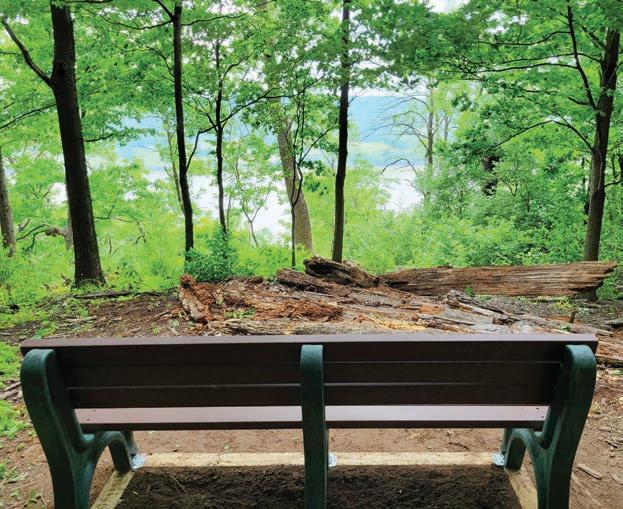


At the end of 2022, the Earth Justice Circle completed its work on the Laudato Si’ Action Platform. The plan follows the framework of other congregations listing not only what the Community has committed to do, but also what the Community has already done. The commitments flow out of the activity we did at the Spring Forum. The committee asks Sisters to engage in those that are possible for them and plans to send out ideas and suggestions for engagement periodically. The following is what was submitted to the Sowing Hope for the Planet website.
• S. Pat Hayden,SCpresident,officiallyenrolledthe congregation in the Laudato Si’ Action Platform and received a confirmation letter certifying our enrollment.
• On April24,2022,atourcongregationalforum,a presentation was given by S. Caroljean Willie, our LSAP liaison, on the Laudato Si’ Action Platform. The presentation was followed by an activity where four Sisters at each table were given a sheet of newsprint with one of the goals at the top. Each of the more than 30 groups were asked to list what the congregation was already doing pertaining to the goal and what more we could be doing. This information was collated and sent to congregational Leadership and the members of the Laudato Si’ Committee for further analysis and as a tool for formulating our goals.
• Arosaryontheecologicalsorrowfulmysterieswasheld in the Motherhouse chapel. Other ecological joyful and glorious mysteries will follow.
• On Oct.2,2022ournewministrycenter,LaCasadelSol, was dedicated. This building employs both geothermal and solar energies and is 100 percent net zero.
• SeveralSisterstooktheinitiativetodovideointerviewswith the international workers at our nursing facility, Mother Margaret Hall, about the realities of climate change in their home countries. Our Communications Office edited the videos and is making them available weekly on our SC website. They will continue with video interviews with people from the U.S. as well.
• DuringtheSeasonofCreationdailyphotoreflections were offered to Sisters and Associates.
• On PentecostareflectionpageonCareofEarth incorporating quotes from Laudato Si’ and our own documents was made available to Sisters for reflection. Sisters and Associates are encouraged to reflect on the paper and participate either in small groups or via Zoom to share.

Laudato Si’ Action Plan Commitments:
• HoldanopenhouseatLaCasadel Sol MinistryCenterfor local civic communities.
• SuggestthattheCommunityholdMeatlessMondays(or commit to another day of the week not to eat meat).
• ProvideeducationforSistersonenvironmentaltopics including why moving to a plant-based diet is healthier for the planet and ecospirituality.
• Provideadvocacyeffortsregardingpendinglegislationon environmental issues.
• Integrateecospiritualityintoalloftheinitiatives we choose to take.
• Continuevideointerviewswithemployeesaboutclimate change.
• ProvidephotoreflectionsonLaudato Si’ forAdventandLent.
• Explorethepossibilityofusingsomeofourlandfor community gardens or an orchard project.
• ProvidereflectionsheetsonLSAPgoalsandourSC Charism/Vision statements.
 By Erin Reder
By Erin Reder
Those who know S. Joyce Richter are well aware of her love for the outdoors and nature. An avid walker, who continues to train for and participate in the Cincinnati Flying Pig half marathon each year, S. Joyce has spent hours hiking the Bender Mountain Nature Preserve located near the Motherhouse property. It was this passion for exercise, nature and wildflowers that eventually led to her involvement in the Western Wildlife Corridor (WWC).

As she explains, “S. Jean Miller invited me to accompany Dan Boone, a local naturalist, as he was creating a vascular plant survey of the Bender Woods. I learned a lot about flowers from him.” Developing a deep appreciation for the 130-acre preserve filled with flowers, plants and trees, she felt drawn to learning and doing more.
A member of WWC’s Board of Trustees, S. Joyce has been involved with the organization for the last 13 years. In addition to serving on its Board, she is responsible for the organization’s electronic mailings – meant to inform and inspire others to become more engaged. She enjoys leading hikes, primarily along the Bender property, and educating others about the area as well as the importance in removing invasive species. “If we don’t [remove them] then they take over. One of the benefits that’s happened with the removal of honeysuckle, is that the native plants have come back again. Dr. Denis Conover, botanist with the University of Cincinnati, has described the area as the ‘best place in Hamilton County to observe native wildflowers.’”
S. Joyce is an advocate for the organization, participating in almost all of Western Wildlife Corridor’s flower-a-thons. The organization’s biggest fundraiser of the year, the flowera-thon is an opportunity for participants to have fun while increasing their knowledge and appreciation for local forests and wildflowers.
She sincerely believes in the mission of WWC and is impressed with their unyielding efforts in land restoration in the western part of Cincinnati. Her participation in the organization led her to become an Ohio-certified volunteer naturalist after taking a 40-hour online course with The Ohio State University Extension and completing 40 volunteer service hours with Western Wildlife Corridor. She’s become more educated on recycling, taking a master recycling class several years ago through Hamilton County’s Recycling Program.
“It’s so important to care for the Earth,” says S. Joyce. “There are recycling opportunities everywhere, otherwise we just continue to add to the waste. The oceans are getting
filled. Other places are getting polluted from all that we throw away. You can start small with recycling and hopefully it will branch into other ways of living.”
S. Joyce has been involved with the Sustainability Program at Mount St. Joseph University and with St. Anthony Church’s “Beyond the Bin” program. She organized several Community-wide book exchange days and hosts a dedicated recycling day during congregational gatherings. She also volunteers at Cincinnati’s Recycling & Reuse Hub in Lower Price Hill (Cincinnati).
S. Joyce explains that WWC is always looking for more volunteers to get involved and to be a part of the cause. She has offered presentations on the Bender Mountain Nature Preserve, hoping to inspire others to act and enjoy the trails. “Just get out and enjoy nature; it does something for the soul,” she says.

 By Erin Reder
By Erin Reder

Care for creation and resourcefulness are rooted deep in Colleen McSwiggin. The Cincinnati native and 2019 Elizabeth Ann Seton Award recipient remembers helping her father start seedlings in their laundry room as a young child and tending to his garden. Her father’s passion coupled with her maternal grandparents forward-thinking instilled in Colleen an awareness and purpose that would eventually lead her to open the Cincinnati Recycling & Reuse Hub (the Hub), a nonprofit organization dedicated to reducing the amount of waste going to landfills through its one-stop drop-off location.
Colleen credits her prior position with Mount St. Joseph University as the impetus for opening the Hub. From 20102021, she was the Chemistry Lab Manager at the Mount. She also served as a member and chairperson of the Mount’s Sustainability Committee, and when S. Martha Walsh decided to step down from coordinating Community Electronics Recycling Days, Colleen stepped up to take it over.
She explains, “In April 2012 we had our first on-site recycling event at the Mount; every year following we would host one event in the fall at the Mount and a second in the spring at Oak Hills High School. At one of those events I had a lightbulb moment. It was April 2018 and we had 764 cars go through the line in 2 ½ hours; we filled five semi-trucks and still had to tell 150 people we couldn’t take their items. It was the one that killed me; I started to think how can we fix this problem?”
Out of this question grew the Cincinnati Recycling & Reuse Hub. The organization accepts items and materials that are recyclable and reusable, even some that are not permitted in traditional recycling bins. This one-stop model is unique in that it saves time, effort, and gas for donors, and it allows for more items to be recycled or reused than the previous waste/
recycling/reuse infrastructure for the Greater Cincinnati area.



Colleen also credits the Sisters of Charity as an inspiration. Following her 2019 honor as the congregation’s Elizabeth Ann Seton Award recipient, she said, “I felt I needed to step up my game. [The recognition] gave me the push to do more. And I could see how to do it, so I tried and did.”
Colleen added that she admires the Sisters thoughtful response to the world and justice issues around them. “They put the humanity and heart behind something. They think how is this particular issue affecting people and their lives and how can we respond to care for all? I admire that very much. Being able to stand for what they believe in is inspiring.”
In the 20 months since the Hub has been open, they have kept 200 tons of waste out of the landfill. Colleen takes pride in knowing that the organization is able to handle a problem no other organization in the Greater Cincinnati area is able to handle, particularly on a large scale. She explains that only one-third of our waste actually needs to go to the landfill as one-third is recyclable and the other third compostable. “If we can take care of two-thirds of what goes to the landfill, and if the Hub can help with a dent of that, especially if someone else can use the items, then that’s why we exist. To fill that gap, to try to make things more sustainable in general, and to get items to people who need them.”


Shifting norms and expectations away from disposability and toward sustainability is the vision of the Hub. Colleen and her staff are committed to increasing awareness and helping the community look differently at how their actions to recycle and reuse have long-term effects on the environment, the economy, and social justice. Colleen’s tireless efforts continue to exemplify why she was a most-deserving recipient of the Elizabeth Ann Seton Award. Her heart is called to the Community’s mission to care for all creation.






















 By Sisters Barbara Hagedorn and Annie Klapheke
By Sisters Barbara Hagedorn and Annie Klapheke
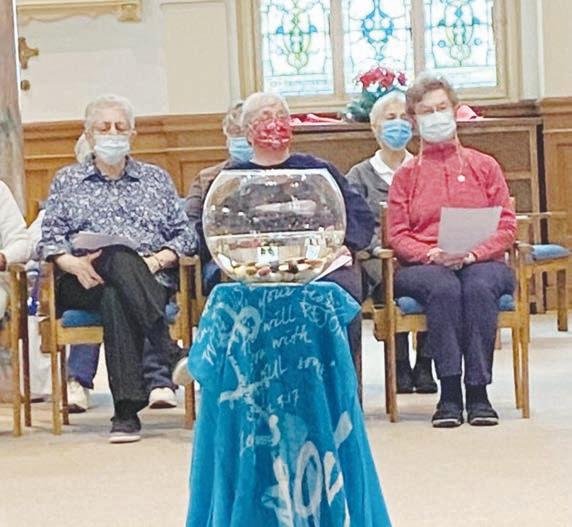
to listen deeply and speak from the heart. The weekend began in chapel as we gathered in a large circle for a simple, powerful ritual centered on letting go and healing.
Since Chapter preparations began in April 2022, the symbol of the map has been the image that has guided us. We started on this journey at the Spring Forum and have made significant stops along the way as we prepare for the Chapter April 1622, 2023. In the opening letter of this issue of Intercom, S. Marge expresses: “With the momentum of this past year’s planning at our back, we find ourselves grounded by our sacred roots and firmly planted in the soil of possibility.” Our journey thus far has been one of exploring dreams and ideas that will enable us to best live our mission into the future.
The Chapter Planning Committee – Sisters Monica Gundler, Marge Kloos, Kathy Pinto, Carol Wirtz and co-chairs Annie Klapheke and Barbara Hagedorn – with facilitators Debbie Asberry and Lisa Negsted have guided the process. What are the “stops” we have made and how have they helped us prepare for the Chapter? The committee planned with the awareness that religious life is changing and we need to be open to new ways of doing things.
Starting in spring 2022, we began to explore questions such as: What has already changed or is going to change for us? What is over? What will ensure continuity for what really matters? What can we do so that the change will be good for us and for the world? Conversation Circles were organized for Sisters and Associates to gather in person or by Zoom to share their reflections on these questions and others offered by the planning committee. Each stop along the journey helped us go deeper to shape what our path forward might be. The participation of the whole was critical in bringing forth ideas of what might be possible.
Sisters spent significant time together at the Discernment Retreat in January 2023. This was a new way for us to gather to prepare for Chapter. The planning committee designed the retreat in response to the Sisters’ strong desire to discuss topics and give concrete suggestions that will move us to action, and to be with one another in a contemplative space
We also wanted to reflect on what we need in leadership for our future. How might leadership and membership engage with one another in new models of decision-making?
To help us explore this question, S. Nancy Conway, CSJ, joined us virtually for her input. In her clear, open and lively manner, she presented different ways of making decisions and spoke from her own experience as a congregational leader. S. Nancy shared reasons why certain decisions were made and the challenges and lessons learned when things could have been handled differently. Considering what S. Nancy shared, we now ask what are possible implications for us as we look ahead to the next four years?
The participants left the retreat knowing we had spent sacred time together in an important place on our journey. Now with April 2023 quickly approaching we carry that spirit with us to the Chapter where we see what is possible for our future.
“That is the charm of the map. It represents the other side of the horizon where everything is possible.”
Rosita Forbes
., “Permeate us with your grace to go forth in service to your people and all creation.”
Chapter Prayer



 By S. Joan Elizabeth Cook
By S. Joan Elizabeth Cook
S.Grace Ann Gratsch’s life has been defined significantly by the discussions and decisions of Vatican Council II. She was born in Norwood, Ohio, the fourth of five children of Edward and Adele Gratsch. Both of her sisters, Ruth and Adele, married and had eight children. Both of her brothers, Ed, the oldest child, and Mark, the youngest, were priests of the Archdiocese of Cincinnati. Adele lives in Cincinnati, and she and S. Grace enjoy getting together to celebrate family moments and special occasions.
S. Grace first met the Sisters of Charity in St. Matthew Elementary School in Norwood. She has particularly fond memories of S. Marjorie Ann Suver, her third grade teacher. S. Grace attended Regina High School in Norwood, staffed by the Precious Blood Sisters (CPPS). As she thought about entering religious life, she was torn between her love for the SCs and the Precious Blood Sisters until she visited the Mount St. Joseph Motherhouse. There she noticed in a stained-glass window a picture of the Sacred Heart. That picture, plus her love for the SCs at St. Matthew’s – she found
them happy, friendly and approachable –convinced her to become an SC after high school graduation in 1948. S. Grace made first vows in 1950.
After first vows she studied at The Athenaeum of Ohio while teaching sixth grade at St. Dominic, then was missioned to St. James, Bay City, Michigan; Corpus Christi, Dayton, Ohio; St. Charles, Lima, Ohio; and Little Flower, Mount Airy (Cincinnati). But before she arrived in Mount Airy she was missioned to Villa Nazareth in Rome, Italy.
She and S. Grace Elizabeth Meikenhous were scheduled to sail together to Rome. Mothers Mary Omer Downing and Mary Romana Dodd and Sisters Mary Janet Miller and Rosarita McKeone traveled with them to New York to attend a meeting about Mother Seton’s cause for canonization. When the Sisters went to the pier, they learned that departure was delayed because of an electrical problem on the ship. The Sisters enjoyed touring New York, then returned to the pier at the designated time. The boat had left the dock! The two Graces were taken by tugboat to the ship, where they climbed a ladder and boarded. All during the voyage the other passengers recognized them as the ones who climbed on board in their long black habits.
It was an auspicious time to be in Rome: a few months earlier, Pope John XXIII had announced the convening of Vatican Council II, and a press conference was held at Villa Nazareth to publicize it. For the opening ceremony in St. Peter’s Square, the Sisters had reserved seats in the loggia above the Square. And two months later, Elizabeth Seton was beatified. The beatification and the Vatican Council brought visitors from Cincinnati to Rome, and the Sisters welcomed them to Villa Nazareth. They also attended evening briefings about the topics being discussed by the bishops – a marvelous opportunity to keep up with the ideas being considered during the Council sessions.
At Villa Nazareth, the Sisters were responsible for administrating the Villa, teaching English to the boys who lived there, planning and supervising recreational activities
and summer fun. They also arranged volunteer opportunities for the boys, such as teaching Sunday catechism classes in a nearby parish, sodalities, and collections for people in countries suffering from poverty in the aftermath of World War II. One of the “boys” who lived at the Villa recently described his fond memories of learning to play baseball from S. Grace Ann.
After six years at Villa Nazareth, S. Grace was missioned to the Motherhouse to serve as Novice Director for the congregation. It was a huge adjustment to go from working with Italian boys to preparing American women for vows, at a time when life was changing dramatically in the United States and throughout the world. Understandings of religious life were evolving with the deliberations and conclusions of the Council.
Then S. Grace was missioned to Elizabeth Seton High School in South Holland, Illinois, to teach religion. Again realities were shifting with efforts to adjust religion curricula to the teachings of Vatican II. At her next mission, O’Rafferty High School in Lansing, Michigan, which became Lansing Catholic Central, she was part of a religious education team. This was a rich opportunity to work with other religion teachers in creative ways, adapting lessons and methods to life in the 1960s and early 1970s. During the summers S. Grace studied religious education at The Catholic University of America, in Washington, D.C., where she shared the thinking that was emerging from the Council. She remembers, “I always thought [grace] was something you had. But the whole notion of grace was that it was God’s life within us. And it was a living thing that made us aware of God with us always.”



S. Grace began to internalize the Council’s emphasis on involvement of the laity in the life of the Church. She participated in a Clinical Pastoral Education program at Bethesda Hospital in Cincinnati while teaching part-time at St. Andrew’s, Milford. Then she was appointed pastoral associate at Nativity Parish in Pleasant Ridge [Cincinnati]. She created the position, modeling pastoral service in the Church. She presided at Communion services, preached, organized prayer groups, visited shut-ins and patients in hospitals and nursing homes, taking them Holy Communion. She offered support to caregivers through Network of Care, and created a bereavement committee and choir to sing at funerals. Her pastor, Fr. Joseph Allison, was supportive and eager to encourage her in creating these aspects of church life at Nativity. Later, she served at St. Bonaventure, Cincinnati; Holy Name of Jesus in Trenton; and St. Aloysius Gonzaga, Cincinnati. She organized programs for the different liturgical seasons, such as Advent family programs, a Come Home program for people who were estranged from the Church, Coming Alive in Faith seminars, ecumenical services and Lenten opportunities.
For a time S. Grace and Sisters Barbara Huber and Jean Miller served together in the SC Office of Ministry, broadening our SC understanding of ministry to include changing the conditions that create hunger and homelessness, protesting against war and promoting social justice.
In later years S. Grace had several opportunities to visit Villa Nazareth: the 100th anniversary of Villa Founder Cardinal Domenico Tardini’s birth in 1988, the 50th anniversary of the Villa in 1996, and a pilgrimage to the Elizabeth Seton places in Italy led by S. Judith Metz in 2008. S. Grace reflects with gratitude on her opportunities to promote involvement of lay people in church ministry. She is particularly grateful that Pope Francis emphasizes synodality in decision-making. As she looks forward to her 75th Jubilee, S. Grace summarizes her blessings with words she remembers from S. Camilla Smith, her Novice Director, “God is never outdone in generosity.” And we are grateful to S. Grace for sharing her blessings with so many people.



S.Anthony O’Connell, during her years at St. Joseph Orphan Asylum and St. John’s/Good Samaritan Hospital in Cincinnati, Ohio, heard and saw many heart-rending stories of women and children in distress. In the post-Civil War years, with a larger facility available, she had resources to provide a refuge for unwed mothers and poor widows as a service of Good Samaritan Hospital. Realizing these women could be better served outside a hospital environment, she rented the Ewing Mansion adjacent to the hospital in 1867. Naming the new facility St. Ann’s Home for Destitute Widows and Females, it was soon occupied by 30 homeless and impoverished women of all ages and religions. According to The Catholic Telegraph, “Never was an institution of this description wanted more for this city.”

The need and desirability of relocating this ministry outside the city led S. Anthony to pursue purchase of the eight-acre Boyle Homestead on Reading Road when it became available. When she asked her friend and benefactor, Mr. Joseph C. Butler, to look over the deed, he generously responded, “Your purse is too slender and family of invalids too large to pay for it so I send you the deed,” stipulating that, like the Good Samaritan Hospital, it would serve all regardless of race, religion, or country. Three Sisters, under S. Anthony’s direction, opened the now renamed St. Joseph’s Infant Asylum in 1873. In the first year they welcomed 56 babies. The first such facility in Cincinnati, the Sisters were forced to confront prevailing attitudes toward illegitimacy, as the work only slowly gained sympathy. Relying solely on donations, making ends meet was a challenge. S. Agnes

Regina Browne suggested washing the laces of the wealthy women of Clifton and Avondale, an endeavor that also provided employment for the residents of the asylum – “Four o’clock in the morning would find her directing her band of workers. Scheme followed scheme and activity followed activity, for S. Agnes Regina’s charity was boundless.”
After operating as a branch of Good Samaritan for two years, St. Joseph’s became an independent institution under the supervision of S. Cecilia Griffin. During her 10-year tenure, financial struggles and the inconveniences of overcrowding in their small frame house continued. By the mid-1880s generous donations allowed for physical growth as well as St. Joseph’s ability to serve more women and children. In 1884 Reuben R. Springer’s legacy of $20,000, along with the generosity of other friends, allowed for the construction of a new three-story building, while Joseph C. Butler Jr. purchased property to enlarge the grounds. As important as these monetary contributions were, so was the consistent support of Archbishops John Purcell and William Elder, the later of whom established an annual collection in all the parishes of the Archdiocese for the benefit of St. Joseph’s. The asylum also benefitted from the direction of dedicated and generous doctors who gave unstintingly of their services. In particular, Dr. William E. DeCourcy, who directed the medical and surgical work for 37 years, was so dedicated that he had a private telephone installed between his home and the institution. He was succeeded by his son, Dr. Giles DeCourcy, who was equally dedicated to St. Joseph’s.



From 1885 until her death in 1913, S. Agnes Regina was the guiding spirit and leading force that propelled St. Joseph’s through 28 years of untiring service to the most needy. She was described as “a heart capable of being touched by every appeal of mercy,” who “had the power of drawing others, interesting them in assisting.” The 1885 three-story maternity hospital wing was followed a decade later by a three-story children’s wing. Services offered in these facilities included care of unmarried women and their children; care of dependent children of preschool age; a maternity hospital for married mothers; and care of elderly poor women.
Most of the unmarried women who arrived in the early days of the asylum were bewildered and distressed, destitute and without resources. An interview with the director determined admission, and there was an atmosphere of secrecy to protect anonymity. Their lengths of stay varied as did their decision whether to keep their baby. The Sisternurses who cared for these women seemed instinctively to respond to their psychological as well as physical needs. In a tribute to S. Agnes Regina one former patient wrote, “I am one out of many whom she and the good Sisters cared for when the whole world was against us.”
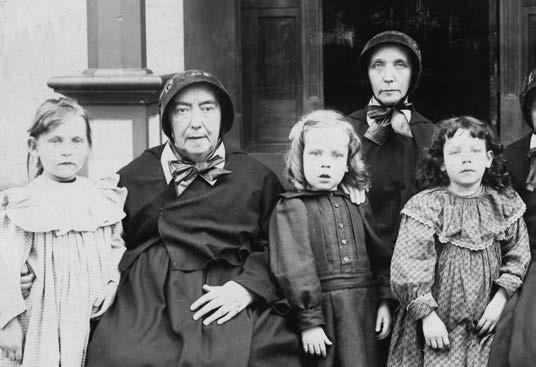
Of the hundreds of children St. Joseph’s cared for, many were orphaned or simply abandoned. Babies were regularly left on the doorstep and in the hedge near the entrance of the institution. It was S. Agnes Regina’s custom to inspect the yard each night before retiring in search of abandoned infants. St. Joseph’s received every class and religion of children, including in many cases the diseased and the tubercular. Dr. Giles DeCourcy estimated that in its first 50 years St. Joseph’s cared for 15,000 women and babies.
The children’s wing, with a capacity of 120, was divided into four nurseries with the children placed according to age. They learned good table manners and the importance of good nutrition, while age-appropriate educational and recreational activities, toys, and outings were part of their daily program.


In 1906 a kindergarten was opened, initially staffed by volunteer teachers, but later a teacher and assistant were hired. The Infant Aid Society, founded in 1898, sponsored fundraising events and donated generously to the asylum. One description tells of a Christmas tree “laden with bonbons and goodies for each and all … . Not one of the inmates of the house but received some little token to show that he [or she] had been thought of by Santa Claus.”
St. Joseph’s Infant Asylum was conducted as a private institution until 1916 when, by order of Archbishop Henry Moeller, all Catholic charitable institutions were required to operate under the Bureau of Catholic Charities. This change represented a new chapter in the history of the asylum. Going forward all admissions were made by a professional social worker through Catholic Charities, and were limited to Catholics who lived in the Archdiocese of Cincinnati. Far fewer expectant mothers, babies, and small children were cared for, but enhanced professional services were available to all who were admitted to St. Joseph’s.



 By S. Georgia Kitt
By S. Georgia Kitt
Taken, Blest, Broken and Given. At the Table of the Eucharist and in our relationships these words hold deep meaning. This is especially true for a 1644 gold chalice, referred to by some as the wandering symbol of Irish faith. What a surprise when the lost, almost 400-year-old vessel, was found in safe-keeping at the Sisters of Charity Motherhouse. It was an event well-covered in Ireland via television, radio, newspapers and video interviews over several months.
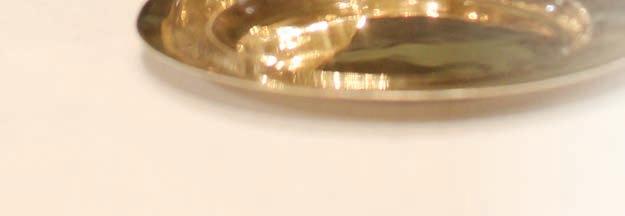



In pre-pandemic 2017 Veronica Buchanan, SC Archivist, received an email from Monsignor Liam Kelly who was in the process of researching the history of Franciscan communities in Leitrim County, Ireland. Monsignor Kelly, a diocesan priest and historian for the Diocese of Kilmore and County of Cavan in the northwest of Ireland, came upon an article in the 1916 Catholic Historical Review indicating that there was a gold chalice, 9 inches high with a cup 3 inches in diameter, a base 4½ across with the inscription: pro residentia fratrum minorum de Munter oluis, 1644 in the possessions of the Sisters of Charity, Mount St. Joseph-onthe-Ohio. This finding helped Kelly to confirm the approximate year when Franciscan Friars established a residence in Muintir Eolais near the city of Jamestown, and his findings were later published in a chapter of the book “Leitrim: History & Society.”

It appears that the friars’ chalice has had a checkered history. Nine years after it was given to them, Jamestown fell to the Cromwellian forces, the friary was suppressed and all priests were ordered to leave the country; the Franciscans ignored the edict and fled instead to the woods, bringing the small chalice with them, using it when celebrating Mass in secret. One-hundred years later, in 1750, the Penal Laws were eased and Catholics could safely gather to celebrate Mass in public again.

Prior to Monsignor Kelly’s request, the Sisters of Charity Archives had no knowledge of the chalice’s significance. It is not known how the chalice made its way from Ireland to Mount St. Joseph. It is assumed that it came to the Motherhouse from the Sisters teaching and ministering to health care needs in missions in Albuquerque or Santa Fe, New Mexico where they worked with Franciscan Friars who had a shared history with the Friars in Leitrim.


When the request came, repurposing and downsizing of the contents of the Motherhouse Art Room were in progress; some items in the chalice collection were being sent to a group specializing in reconditioning and reuse of sacramental items. The Sister Sacristans and Buchanan were able to separate the historic chalice from the others. The email correspondence the Archives had from Monsignor Kelly was revisited. He

immediately responded and helped to find a new home for the chalice in Muintir Eolais at St. Mary’s Church in Carrick on Shannon.
Sacristan S. Marie Irene Schneider shared, “I could not believe that this very old, tarnished chalice could be so wanted. After I polished and very carefully wrapped it, I found out how much Ireland wanted it. Handing it over to Monsignor Kelly was a thrill – just seeing the joy in his eyes gave me a great sense of peace and happiness, knowing that I was able to find, clean and care for such a valuable Franciscan treasure.”
On Oct. 17, 2022 Monsignor Kelly made a personal visit to the Motherhouse from Ireland, connecting with those who were instrumental in the chalice being located, found in fine condition and having the promise of ‘going home’ again. It was an occasion for smiles and gratitude, all taking place in the Motherhouse chapel.
Sacristan S. Mary Dolores Schneider sees it as a true God event. “The story of the 1644 chalice and the Sisters of Charity is nothing but amazing! Every person connected with the SC Archives, leadership and the Motherhouse chapel was sent as part of God’s plan for this small chalice and its return to its original parish in Ireland. Every day it seems brought a new connection. With each new name, move and finding I felt new energy, enthusiasm and amazement! None of this was coincidental; we could have planned none of it.”


Now, after nearly 400 years, the chalice has ‘come home’ to acknowledge its important role in Church history, to be preserved and celebrated for future generations. Buchanan added, “I would say that Divine intervention certainly was at work at every juncture of the process, guiding the chalice back to its homeland. You could really feel the presence of the Holy Spirit and that is something I felt incredibly honored to be a conduit for its guidance!”
On Gaudate Sunday, Dec. 11, 2022, a special Mass was celebrated at St. Mary’s Church in Carrick on Shannon to welcome the chalice home. It was livestreamed for the Sisters of Charity to join in; a timely scriptural quote from the liturgy: “Be Patient, do not loose heart” spoke to its significance. In his homily during the Mass, Monsignor Kelly expressed gratitude to all who helped bring the precious chalice home. “It is a happy day, one of relief as well.”


To the Sisters of Charity, he said, “Thank you for your self-keeping; you are a special part of the chalice’s historicity.” The wandering symbol of Irish faith has indeed been taken, blest, broken and given once again at the Table of the Eucharist.

Avisit to the Motherhouse at Mount St. Joseph will provide not only a walk down memory lane but also new and refreshed beauty with places to meet, to visit, to relax. The entire second floor has been redecorated and updated, rooms have been renamed with meaningful décor that gives both comfort and a historical perspective about the congregation.
S. Mary Ellen Murphy chaired a committee of Sisters, Kathryn Ann Connelly, Mary Marcel DeJonckheere, Marge Kloos, Patrice Vales. Assisted by Interior Designer, Abby Jahnigen, the committee set to work on the renewal. The project began with the portraits of the mothers and presidents which have adorned the halls for many years. After an absence of twoand-a-half years, the portraits have been returned and each has been enhanced by depiction of various projects and activities significant during her term in office. Beginning with Mother Margaret Cecilia George, the portraits give a chronological display of congregation history and circle back to the current president, S. Pat Hayden, above the main stairwell.
The Heritage Room has been redesigned in keeping with its name. Archbishop Purcell, whose invitation to the first Sisters of Charity was the origin of the Cincinnati Community, is depicted, as is the portrait of Mother Margaret Cecilia George, the founder

of the congregation. Service to God’s people has always been the essence of the Sisters of Charity. This legacy is illustrated with panels adorning the walls. Beginning with a brief description of the first journey of Sisters from Emmitsburg, Maryland, to Cincinnati, Ohio, to open an orphanage, the panels illustrate the various ways Sisters of Charity have served God’s people. Sisters have risked a caring response by serving as nurses, opening foreign missions, teaching at every level in schools, and serving society where poverty and social justice issues are challenged. Service to God’s people continues to evolve as needs and times change. The Sisters of Charity will continue to risk a caring response, no matter what.
The parlors located on the second floor have all been named. These also continue the heritage/legacy theme. The Elizabeth Room, dedicated to Elizabeth Seton, contains sketches of her life by S. Augusta Zimmer, a marble bust of our saint, and a display case with various memorabilia from Elizabeth. Across from the Elizabeth Room is the Margaret Room with the portraits of Mother Margaret Cecilia George and displays of historic artifacts from Margaret. The third parlor, the Blandina Room, contains a replica of the new bust of S. Blandina Segale, Servant of God, which was erected in Trinidad, Colorado. Significant
memorabilia and displays regarding S. Blandina’s era are here. This room provides a table and chairs around which small meetings can occur.
The Halloran Room, which served many years as a meeting place, has been moved, and in its new location continues to be the work place for committees, teams, groups, etc. New furniture plus technology for Internet connections and audio/visual equipment with room for small breakout sessions have brought the Halloran Room up to date.
The Art Room, which for many years, housed a collection of gifts and artifacts to the congregation, maintains its name since it continues to be home to historic and beautiful paintings. These adorn the walls of the balcony and the main area. This magnificently beautiful room with its spiral staircase and wrought-iron balcony has an aura of elegance, beauty, restfulness and contemplation. It is a place for gatherings, celebrations and festivities. In addition, a Cloak Room is located next to the elevator on the floor. This eliminates the need to hang wraps in the hallway.
The project has taken a long time to complete because of the pandemic, supply chain shortages and other delays. However, the end product with new furnishings, wall décor, and carpeting in the theme of heritage, legacy and evolution to modern day has been accomplished. All will be welcome to visit and enjoy.
Intercom is the official magazine of the Sisters of Charity of Cincinnati. This apostolic Catholic women’s religious community exists to carry out the Gospel of Jesus Christ through service and prayer in the world. Approximately 201 Sisters are joined in their mission by 199 Associates (lay women and men). Sisters, using their professional talents as ministers of education, health care, social services and environmental justice, live and minister in 16 U.S. dioceses. They also sponsor institutions to address education, health care and social service needs, with particular concern for direct service to the poor.

Intercom Staff
Editor
Erin Reder
Graphic Design/Layout
Michelle Bley
Director of Communications


S. Georgia Kitt
Executive Council Liaison
S. Monica Gundler
Letters to the editor, articles and photos are welcome. The staff reserves the right to edit for space and readability. Make submissions to: Communications Office 5900 Delhi Road Mount St. Joseph, OH 45051 Phone: 513-347-5447

Email: erin.reder@srcharitycinti.org
Subscriptions: $15 per year
5900 Delhi Road Mount Saint Joseph, OH 45051 www.srcharitycinti.org www.facebook.com/ sisters of charityofcincinnati
Members of the Environment Committee include: (back row, from left) Sisters Kathryn Ann Connelly, Marge Kloos, (front row, from left) Mary Ellen Murphy, Marcel DeJonckheere and Patrice Vales. Not pictured Interior Designer, Abby Jahnigen.5900 Delhi Road
Mount Saint Joseph, OH 45051
http://www.srcharitycinti.org
www.facebook.com/sistersofcharityofcincinnati
After nearly 400 years, a 1644

that
S.


commitment to care for creation has led to her involvement in the work of numerous organizations, including


